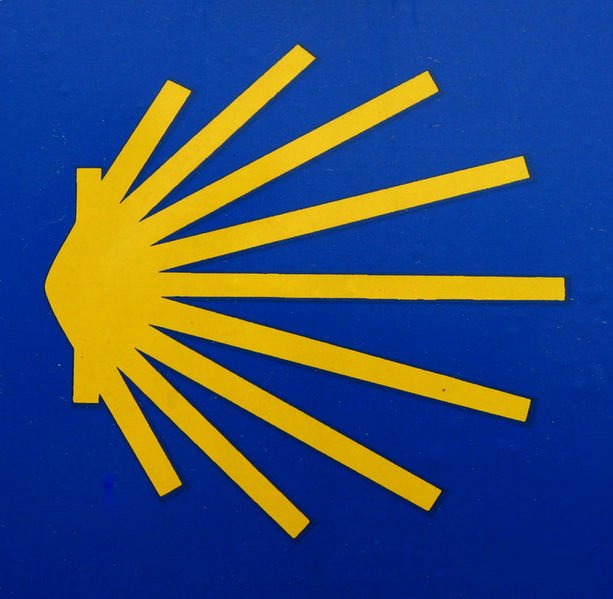A Mighty Fortress
After yesterday´s blog entry, I went out to explore the town of Portomarin. On the banks of the Rio Miño, the ruins of a castle, church, and walls of the Order of St. John are still visible. The town´s most impressive, and complete, site is the Templar church of San Nicolas. Sitting high on a hill, the church appeared from the perspective of the trail into town to be some sort of fortress. Its walls rose straight up--all the support for their height was interiorized in the church´s structure. The four corners of its great rectangle were topped with towers, and the entire building was ringed with ramparts. There is little doubt that the Templars intended this 12th-century edifice to serve both as a church and as a defensive keep. Inside, the nave consisted of a single, great rectangle. The walls still retained a little paint from the 14th century--a tribute to the artists who painted on the still-wet plaster. That´s the history lesson--and you could probably have seen and learned as much on the internet. Now, why traveling is an essential human pursuit. I was studying the painting at the front of the church when someone began singing. One of the visiting pilgrims was singing out in a beautiful, resounding baritone a familiar tune in an unfamiliar language. It was "A Mighty Fortress is Our God"--in German, of course. At the end of three verses, the half-dozen of us in the church broke out in applause. The docent of San Nicolas asked the singer if he would mind a repeat performance for the pilgrim mass that night at 9:00. It turned out that Jon is choir master of his Lutheran church back home in Germany, and he and his wife had been walking the Camino since Pamplona. He was overcome by the combination of the shape of the church and its fine accoustics and just felt compelled to break out into this seminal Lutheran hymn. Luther--at a Catholic mass? Amazingly, the Camino accomodates many blends of history and spirituality. No need to ask where I was at nine that night.
Today, on my way to Palas de Rei, I took about a 9km detour to see the remains of the monastery of Vilar de Donas. Built in 1184, it was under the protection of the Order of St. James and was a location where some of its knights were buried. The chruch reflects a change from the early to the late Romanesque styles, incorporating more rounded curves, for example, than the church of San Nicolas. The entire alter area still retains its stucco paintings--one, a spectacular image of Christ rising from the tomb. Other images included early patrons of the church in full Medieval dress--a treat for the fashion historian. On the remainder of the road into Palas de Rei, we passed a 10th-century cross that was decorated on one side with the Madonna and Child and on the other with the Crucified Christ. The decoration at the base of the cross clearly reflected Galicia´s Celtic heritage. Just another day on the Camino. I am currently in a cafe and the "65km to Santiago" sign is right outside the door. ¡Buen Camino!


2 Comments:
OK, I really hope you have kept a log of all the photos you r taking.You know we will never see Spain, so I'm living the adventure through you!! This has been a learning experience for me. So I'm thanking you in advance. bonita
Jerry,
The light at the end of the tunnel gets closer with each step you take. May your next 65kms be as awesome as the ones already reported. I am amazed at your recall ability for detail. I would be soooo lost at trying to paint the picture that you paint of every location. I can't wait to see the pictures and see if they match what I have imagined. See you in a couple of weeks...
Tommie Rains
Post a Comment
<< Home